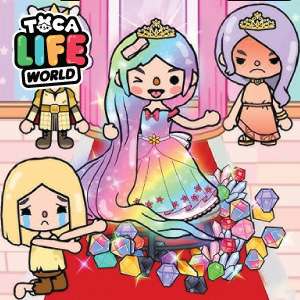Introduction
Released into early access in 2022, Core Keeper quickly captured the imagination of fans who love sandbox survival games with RPG elements. Developed by Pugstorm and published by Fireshine Games, Core Keeper merges mining, crafting, and exploration in a charming pixel-art underground world. It sits at the intersection of titles like Stardew Valley, Minecraft, and Terraria, offering players a cooperative experience that rewards curiosity, patience, and strategic planning.
In this comprehensive article, we’ll explore Core Keeper’s development, gameplay mechanics, progression system, multiplayer dynamics, and long-term potential. Whether you’re a solo spelunker or part of a crew of up to 8 friends, this guide unearths everything you need to know about the game’s evolving ecosystem.
The Origins of Core Keeper
The concept for Core Keeper was born from a desire to combine the peaceful vibe of farming simulators with the thrill of dungeon crawling. Developed by a small Swedish indie studio, the game was first showcased during indie game events in 2021.
h3: Indie Roots and Vision
-
Pugstorm emphasized emergent gameplay and non-linear exploration.
-
They aimed to make the world feel "alive," encouraging replayability and personalization.
h4: Early Access Strategy
-
The decision to launch in Early Access (March 2022) allowed community feedback to directly influence game features.
-
Frequent content updates kept the player base engaged, growing a strong Discord and modding community.
Pros:
-
Transparent development process.
-
Rapid response to player feedback.
Cons:
-
Some early bugs and performance hiccups.
-
Lacked polish in the first few months.
Rating (Launch Strategy): 8.5/10
Getting Started: Waking the Core
Players awaken as explorers in a mysterious underground realm with no memory and one goal: reactivate the ancient Core. The tutorial-free introduction leaves players to figure things out organically.
h3: Learning Through Discovery
-
The game avoids hand-holding, favoring organic learning.
-
Exploration reveals crafting mechanics, tools, and base-building opportunities.
h4: First Steps
-
Dig tunnels, collect ore, and plant crops.
-
The glowing Core structure becomes the central hub for progress.
Pros:
-
Encourages creativity and experimentation.
-
Flexible paths for different playstyles.
Cons:
-
Some players may feel overwhelmed initially.
-
Lack of guidance can lead to confusion.
Rating (Introductory Experience): 7.8/10
Core Gameplay Mechanics
Core Keeper shines through its tight gameplay loop of mining, crafting, building, and combat. While simplistic at first glance, each mechanic deepens over time.
h3: Mining and Terrain Interaction
-
The terrain is fully destructible.
-
Biomes like Dirt, Clay Caves, and Azeos’ Wilderness have unique properties.
h4: Crafting and Equipment
-
Tools degrade and must be repaired or upgraded.
-
Equipment like armor and weapons offer different stats and buffs.
List: Core Mechanics Overview
-
Mining: Essential for resource gathering.
-
Crafting: From basic tools to complex stations.
-
Cooking: Combines ingredients for unique effects.
-
Farming: Supports long-term survival.
-
Combat: Real-time battles with monsters and bosses.
Pros:
-
Wide variety of mechanics that interconnect well.
-
Satisfying progression through new recipes and tools.
Cons:
-
Inventory management can get clunky.
-
Balancing between activities can be tedious.
Rating (Core Gameplay): 9.0/10
Character Growth and RPG Progression
Each action you take in Core Keeper contributes to skill progression in RPG-like stats, making your character stronger over time.
h3: Passive Skill Trees
-
Mining, running, melee combat, fishing, and gardening all have their own skill lines.
-
Each tree unlocks passive bonuses and perks.
h4: Gear and Buffs
-
Accessories and enchanted gear provide temporary and permanent stat boosts.
-
Potions and food further customize gameplay.
Pros:
-
Strong sense of growth and accomplishment.
-
Promotes specialization in co-op teams.
Cons:
-
Skill caps limit long-term maxing out.
-
Respeccing is possible, but not encouraged early.
Rating (Character Progression): 8.7/10
Exploration and Biome Diversity
The underground world is procedurally generated, with each biome presenting new environmental challenges, enemies, and resources.
h3: Biomes and Landmarks
-
Dirt Biome: Starting zone with basic mobs and materials.
-
Clay Caves: Mushrooms and slimes abound.
-
Azeos’ Wilderness: Lush greenery, birds, and electrical hazards.
h4: Rare Resources and Hidden Secrets
-
Glow Tulips, Scarlet Ore, and ancient relics reward exploration.
-
Hidden NPCs, lore tablets, and dungeons expand the world’s story.
Pros:
-
Constant discovery makes travel exciting.
-
Biomes feel distinct both visually and functionally.
Cons:
-
Terrain repetition in large areas.
-
No fast-travel outside of limited teleporters.
Rating (Exploration): 9.2/10
Bosses and Combat Depth
Combat in Core Keeper is deceptively simple but grows increasingly complex with biome progression and boss battles.
h3: Major Bosses
-
Glurch the Abominous Mass: Early slime boss.
-
Ghorm the Devourer: Giant tunneling insect.
-
Azeos the Sky Titan: Electric bird boss requiring specialized strategy.
h4: Combat Systems
-
Ranged and melee combat styles.
-
Shields, dodges, and buffs play a role in strategy.
List: Boss Strategies by Type
-
Glurch: Use speed and ranged attacks.
-
Ghorm: Place spike traps and time it well.
-
Azeos: Use electricity resistance gear and platforming tactics.
Pros:
-
Epic, puzzle-like boss fights.
-
Encourages preparation and resource gathering.
Cons:
-
Some difficulty spikes for solo players.
-
Limited enemy variety in early game.
Rating (Combat/Bosses): 8.9/10
Base Building and Automation
Core Keeper lets you build the ultimate underground base, complete with crafting stations, farms, railways, and electrical systems.
h3: Base Customization
-
Players can build homes, bridges, and farming zones.
-
Use decorative tiles and lighting for style.
h4: Automation Systems
-
Conveyor belts, drills, and electricity make resource gathering easier.
-
Complex circuits and timing mechanisms can be created.
Pros:
-
Encourages creativity and problem-solving.
-
Provides long-term goals beyond survival.
Cons:
-
Automation features unlock late.
-
Building UI could use more precision tools.
Rating (Base Building): 8.6/10
Multiplayer and Co-op Experience
Up to 8 players can explore together, combining skills and sharing resources.
h3: Co-op Highlights
-
Shared world progression and boss battles.
-
Team roles (farmer, fighter, miner) naturally emerge.
h4: PvP and Private Worlds
-
No formal PvP, keeping it peaceful.
-
Server hosting requires manual setup for public worlds.
Pros:
-
Fantastic for casual or structured group play.
-
Balanced difficulty scaling.
Cons:
-
No matchmaking system.
-
Sync issues can happen with large builds.
Rating (Multiplayer): 9.1/10
Ongoing Development and Updates
Core Keeper’s development is active, with a major 1.0 release expected in late 2025, according to the developers.
h3: Content Roadmap
-
New biomes, mounts, NPCs, and story content are planned.
-
Seasonal events (Halloween, Spring Festival) add cosmetic fun.
h4: Community Involvement
-
Strong modding support.
-
Regular dev blogs and public test branches.
Pros:
-
Devs listen to the player base.
-
Frequent quality-of-life fixes.
Cons:
-
Some promised features delayed.
-
Performance on older hardware needs improvement.
Rating (Support & Updates): 9.3/10
How Core Keeper Compares to Similar Games
Core Keeper blends elements from Stardew Valley, Terraria, and Don’t Starve, but creates a niche all its own.
h3: Unique Selling Points
-
Focus on underground exploration.
-
Biome-based RPG progression with co-op compatibility.
h4: Comparison Snapshot
| Feature | Core Keeper | Terraria | Stardew Valley |
|---|---|---|---|
| Biome Depth | High | Medium | Low |
| RPG Elements | High | Medium | Medium |
| Combat Focus | Moderate | High | Low |
| Multiplayer Support | Up to 8 | Up to 4 | Up to 4 |
Pros:
-
Distinct identity despite familiar elements.
-
Less pressure than survival games like Don't Starve.
Cons:
-
Still lacks some sandbox freedom.
-
Limited narrative arc (so far).
Rating (Genre Comparison): 8.8/10
Conclusion
Core Keeper is a compelling example of what a well-executed indie survival sandbox can offer. Its blend of procedural exploration, RPG growth, cooperative gameplay, and automation creates an addictive loop that feels rewarding at every stage. While still in active development, it already feels richer and more polished than many fully released games.
Whether you're mining in solitude, building with friends, or preparing for a titan-level boss fight, Core Keeper delivers depth, charm, and challenge in equal measure. It’s a shining gem for fans of underground adventures—one that’s only getting brighter with time.
Final Expert Rating: 9.0/10 — A beautifully crafted survival RPG with excellent co-op features, endless replay value, and a promising future.
































